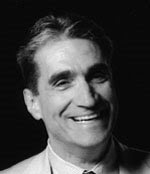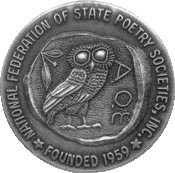In the Fall of 1988, I was enrolled as an undergraduate at Bowling Green State University in Bowling Green, Ohio. The University is just off interstate 75, about half an hour drive South from Toledo. The football stadium is visible from the highway.
One of the classes I took that Fall was English 202 Craft of Poetry. The teacher was John O'Connor. His father was also a faculty member there. His name, I think, was Phil O'Connor. Our teacher told us early on that he wanted the class to have a workshop feel to it. We were expected to engage each other with our poems and welcome constructive criticism from our classmates. I still have the texts that were required for this class: The Morrow Anthology of Younger American Poets and Writing Poems by Robert Wallace with Foreward by X.J. Kennedy.
One of the assignments for this class was to select a book of poems by one poet and write about the poems in that book. Also to say whether we thought the book we chose was worth recommending to other readers. I wish I could remember the assignment details better than that. I do remember that the teacher announced to the class that he would look at an early draft once if we wanted and offer constructive criticism.
I chose the book by John Ashbery, Self-Portrait in a Convex Mirror. I have a vague memory of showing him a draft of my essay which mentioned seven elements used variously throughout the poems. He said the categories were good ones and that it would be enough to provide an example of each element.
Recently, while I was looking for my 2007 tax return, I happened to find the essay I wrote for the poetry class in the Fall of 1988. I showed it to my friend Jack when we met to discuss the Ashbery poem "Voyage in the Blue" which is in the book Self-Portrait in a Convex Mirror. When he read my essay, Jack remarked that, back then, I read idiomatically. We agreed that that was probably the best reading strategy I knew at the time, and that's why I read those poems that way. Mind you, in the Fall of 1988 I was 22 years old. I offer my essay here as an example of a young poet struggling to put things together. Here's what I came up with. The paper is dated October 19, 1988.
-->
Self-Portrait in a Convex Mirror, a book of poems by John Ashbery, has won the Pulitzer Prize, the National Book Award, and the National Book Critics Circle Award. The thirty-four poems in the book describe thoughts, systems of thought, emotions, and a few relationships with friends. Platonic thinking, existentialism, and the perception of time as a day-to-day prison of sorts appear and reappear in various poems; in the title poem, these things are considered as artistic expressions and as artistic tools. The impressive thing, I think, is that the author has taken it upon himself to consider and express what seems to me to be a vast quantity of information, and has assembled it consistentlhy and coherently.
Helping to keep coherence from one poem to the next are seven recurring elements. Typically, a poem will have from two to four elements helping to express the poet's meaning. The elements I identified, to be described subsequently, are as follows: the poet's personal expression, his personal view, the idea of encompassing, the discussing of the creative process, existential thinking, Platonic thinking, and what I call mental microprocessing.
The poet's personal expression is probably the most straightforward for me to describe, but probably the most difficult of the elements to understand. What I took to be direct personal expression appeared fairly often, in nearly half of the poems. Consider this brief poem, “Tarpaulin”:
Easing the thing
Into spurts of activity
Before the emptiness of late afternoon
Is a kind of will power
Blaring back its received vision
From a thousand tenement windows
Just before night
Its signal fading
The poems are usually three times this length; however, this is one of the few poems to employ no other element but personal expression.
What I call the personal view of the poet is one degree more sophisticated than personal expression. Personal view expresses a thoughtful opinion or observation of something that is, in all likelihood, important to the poet. This element appears nearly as often as that of personal expression. One poem, “Worsening Situation”, describes his opinion that our world continues to devolve when the attitude of “going along for the ride” (not a quote) prevails. But it really isn't that clear, because he asks “...what else is there?” besides riding along. Puzzling thoughts are frequent throughout the poems, and are expressed in a variety of ways.
Coalescing in poems with the idea of encompassing are the remaining elements; in order of the frequency in which they appear, they are: the discussing of the creative process, existential thinking, Platonic thinking, and what I call mental microprocessing. Mental microprocessing occurs least of all the elements; still, I think it is distinct and noteworthy.
In discussing the creative process, I felt involved in simply reading. Hopefully this excerpt from the beginning of “Oleum Misericordiae” will illustrate my meaning:
To rub it out, make it less virulent
And a stab at rearranging
The whole thing from the ground up.
Yes we were waiting just now.
Yes we are no longer waiting.
I found this element to be prominent in eight of the thirty-four poems. In six of the poems, I thought existential thinking was the most important. An example of this can be seen “Sheherezade”, near the end of the poem:
...it is we who make this
Jungle and call it space, naming each root,
Each serpent, for the sound of the name
As it clinks dully against our pleasure,
Indifference that is pleasure. ...
Four of the poems seemed to be primarily concerned with Platonic thinking. The first stanza of “All and Some”, I think, evinces this element:
And for those who understand:
We shifted that day, until there was no more
Coming out of the situation we had so imitated.
And now we had talked of it
Not as a human being, deeply polite and intelligent
Coming forward to speak things of dark concern
But as merely interesting description of itself.
The least used element, mental microprocessing, is dominant in “Grand Galop” and “Lithuanian Dance Band.” This element seems at first to ramble, but after considering it, I think the form may be an argument for the presence of a limit to that which can be expressed by an individual (after all, one can take in only so much information at a time). Here is a representative sample from “Lithuanian Dance Band”:
Nathan the Wise is a good title it's a reintroduction
Of heavy seeds attached by toggle switch to long hoops leading
Out of literature and life into worldly chaos in which
We struggle two souls out of work for it's a long way back to
The summation meanwhile we live in it “gradually getting used to”
Everything and this overrides living and is superimposed on it
As when a wounded jackal is tied to the waterhole the lion does come
The remainder of this poem is like this, a rambling run-on-sentence pregnant with thoughts and thinking.
The idea of encompassing appears in more than half of the poems, more than any other element. This idea brings together such things as the past, the present, and the future in one case; individuals and groups in another; existentialism and Platonic thinking in a third. Consider this example of the first case in “Hop `O My Thumb”:
... . No worse time to have come,
Yet all was desiring though already desired and past,
The moment a monument to itself
No one would ever see or know was there.
An example of the second case can be found in “De Imagine Mundi”. It begins thus:
The many as noticed by the one:
The noticed one, confusing itself with the many
Yet perceives itself as an individual
Travelling between two fixed points.
An example of a passage encompassing Platonic and existential thinking will be seen in the discussion of the title poem. The idea of encompassing is, I think, the one most important to the poet.
The last and title poem makes use of each element and makes a major combination of the elements of Platonic and existential thinking. The poem is in six sections, the last one being two to three times as long as the previous sections.
The first section is primarily the poet's personal view of a painting by Parmigianino. The painting is a portrait of the artist himself, as seen in a convex mirror. The diction here, as in all the poems, reveals a complexity of thought that kept me “on my toes”. The second section is primarily a personal expression of the poet's. Here he thinks of his friends and of his past. This section I thought was a little less interesting than the first. The third section expresses the idea of encompassing past, present, and future. The fourth section contains elements of encompassing as well as the discussing of the creative process. The fifth section is the poet's personal view of the very poem containing it. This is expressed by considering possible motives Parmigianino had in making the painting. The poet also considers the painter's abilities and limitations as an artist. The poet decides that his poem, like the self-portrait of the painter, is “... a metaphor/Made to include us, ...”. The sixth and final section of the title poem shows the bringing together of Platonic and existential thinking. Here is the best example of this that I could find:
... One is forced to read
The perfectly plausible accomplishment of a purpose
Into the smooth, perhaps even bland (but so
Enigmatic) finish. Is there anything
To be serious about beyond this otherness
That gets included in the most ordinary
Forms of daily activity, changing everything
Slightly and profoundly, and tearing the matter
Of creation, any creation, not just artistic creation
Out of our hands, to install it on some monstrous, near
Peak, too close to ignore, too far
For one to intervene? This otherness, this
“Not-being-us” is all there is to look at
In the mirror, though no one can say
How it came to be this way. ...
The careful reader should be able to recognize a similar expression in the sample provided as an example of mental microprocessing, the beginning of “Lithuanian Dance Band”.
The coherence of the whole I found to be amazing. The complexity of thought as revealed in the presentation of ideas and descriptions I thought was relentless and involved me as I read. Each poem seemed at least somewhat conversational; i.e., the poet describes, almost in an offhand way, his opinion on the variety of subjects present in the seven elements I identified in his poetry. I think this collection of poems is worthwhile reading.
Submitted October 19, 1988 in 202 Craft of Poetry, John O'Connor, Bowling Green State University. There are no comments from the teacher on the essay. There are some marks in the margins that look like plus signs. This paper earned an A- grade.






















